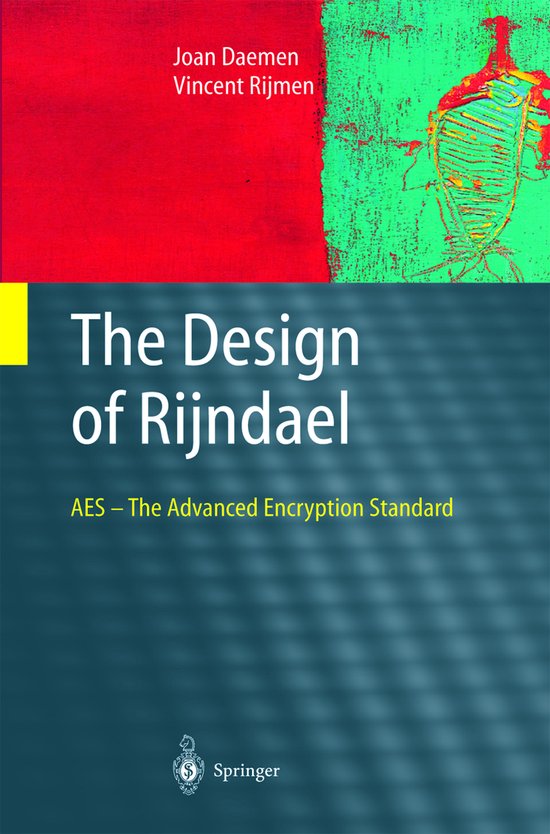
The Design of Rijndael
In the end, the elegance, efficiency, security, and principled design of Rijndael won the day for its two Belgian designers, Joan Daemen and Vincent Rijmen, over the competing finalist designs from RSA, IBM, Counterpane Systems, and an EnglishjIsraelijDanish team.
In October 2000, the US National Institute of Standards and Technology selected the block cipher Rijndael as the Advanced Encryption Standard (AES). AES is expected to gradually replace the present Data Encryption Standard (DES) as the most widely applied data encryption technology.
This book by the designers of the block cipher presents Rijndael from scratch. The underlying mathematics and the wide trail strategy as the basic design idea are explained in detail and the basics of differential and linear cryptanalysis are reworked. Subsequent chapters review all known attacks against the Rijndael structure and deal with implementation and optimization issues. Finally, other ciphers related to Rijndael are presented.
This volume is THE authoritative guide to the Rijndael algorithm and AES. Professionals, researchers, and students active or interested in data encryption will find it a valuable source of information and reference.
Rijndael was the surprise winner of the contest for the new Advanced En cryption Standard (AES) for the United States. This contest was organized and run by the National Institute for Standards and Technology (NIST) be ginning in January 1997; Rijndael was announced as the winner in October 2000. It was the "surprise winner" because many observers (and even some participants) expressed scepticism that the D.S. government would adopt as an encryption standard any algorithm that was not designed by D.S. citizens. Yet NIST ran an open, international, selection process that should serve as model for other standards organizations. For example, NIST held their 1999 AES meeting in Rome, Italy. The five finalist algorithms were designed by teams from all over the world. In the end, the elegance, efficiency, security, and principled design of Rijndael won the day for its two Belgian designers, Joan Daemen and Vincent Rijmen, over the competing finalist designs from RSA, IBM, Counterpane Systems, and an EnglishjIsraelijDanish team. This book is the story of the design of Rijndael, as told by the designers themselves. It outlines the foundations of Rijndael in relation to the previous ciphers the authors have designed. It explains the mathematics needed to and the operation of Rijndael, and it provides reference C code and underst test vectors for the cipher.
In October 2000, the US National Institute of Standards and Technology selected the block cipher Rijndael as the Advanced Encryption Standard (AES). AES is expected to gradually replace the present Data Encryption Standard (DES) as the most widely applied data encryption technology.
This book by the designers of the block cipher presents Rijndael from scratch. The underlying mathematics and the wide trail strategy as the basic design idea are explained in detail and the basics of differential and linear cryptanalysis are reworked. Subsequent chapters review all known attacks against the Rijndael structure and deal with implementation and optimization issues. Finally, other ciphers related to Rijndael are presented.
This volume is THE authoritative guide to the Rijndael algorithm and AES. Professionals, researchers, and students active or interested in data encryption will find it a valuable source of information and reference.
Rijndael was the surprise winner of the contest for the new Advanced En cryption Standard (AES) for the United States. This contest was organized and run by the National Institute for Standards and Technology (NIST) be ginning in January 1997; Rijndael was announced as the winner in October 2000. It was the "surprise winner" because many observers (and even some participants) expressed scepticism that the D.S. government would adopt as an encryption standard any algorithm that was not designed by D.S. citizens. Yet NIST ran an open, international, selection process that should serve as model for other standards organizations. For example, NIST held their 1999 AES meeting in Rome, Italy. The five finalist algorithms were designed by teams from all over the world. In the end, the elegance, efficiency, security, and principled design of Rijndael won the day for its two Belgian designers, Joan Daemen and Vincent Rijmen, over the competing finalist designs from RSA, IBM, Counterpane Systems, and an EnglishjIsraelijDanish team. This book is the story of the design of Rijndael, as told by the designers themselves. It outlines the foundations of Rijndael in relation to the previous ciphers the authors have designed. It explains the mathematics needed to and the operation of Rijndael, and it provides reference C code and underst test vectors for the cipher.
| Auteur | | Joan Daemen |
| Taal | | Engels |
| Type | | Hardcover |
| Categorie | | Computers & Informatica |